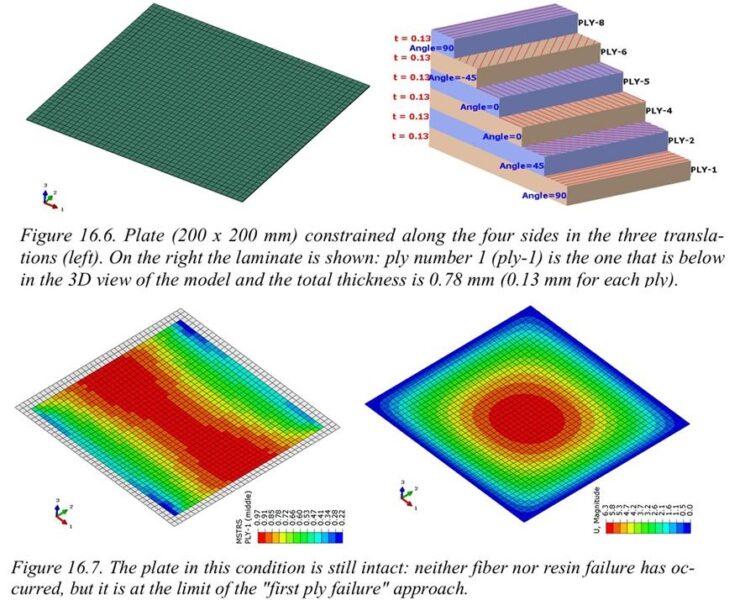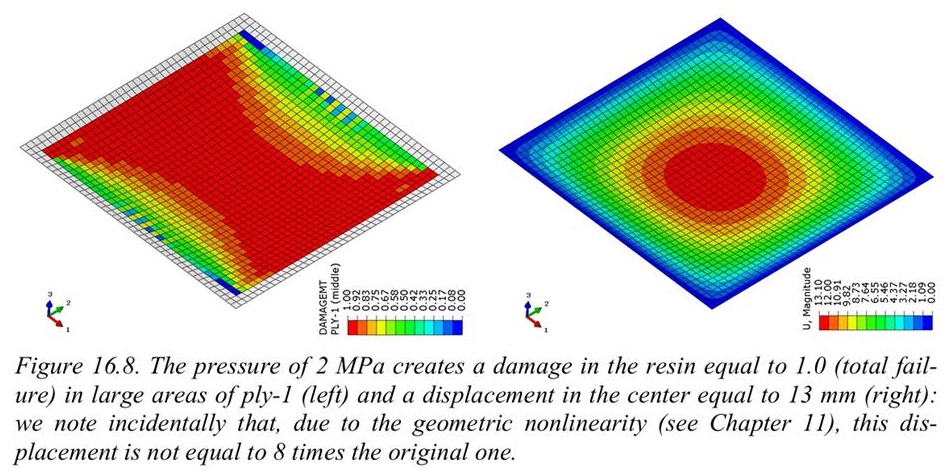Beyond First Ply Failure Approach in Composites Structures
In general to discriminate if a composite structure can withstand the loads to which it has been designed, the first ply failure approach is followed; this means that when a ply in the laminate reaches its failure point, i.e. has a Failure Index equal to 1.0, then the whole structure is considered failed. Fibers, especially carbon fibers, have a brittle behavior, even if in some respects mitigated by the presence of the resin, and this is the main reason why “partial” failures are not tolerated, as on the contrary it is done with ductile materials, where some plasticization in welcome in different load scenarios.
Nonetheless in some conditions, like exceptional load cases, it is possible to allow one or more plies to fail while still having the whole structure not completely falling apart.
To go beyond the limit of the first ply failure approach, more data on the material in use are needed (similarly to what is required with the damage initiation and propagation in ductile materials), but once they are available, non linear FE models can be created to determine what is happening when one or more plies fail inside a laminate.
This is what is shown at § 16.3 of the book “Computational Structural Engineering“, where a plate loaded with pressure is analyzed with different pressure values, up to its complete failure, showing that the structure still have good capabilities to resist loads (2 MPa pressure), even quite above the level set by the first ply failure approach (0.25 MPa pressure).


Every time it is possible to accept permanent deformations and partial failure in composite structures, going beyond the first ply failure approach saves mass, with all the related benefits that come along.
